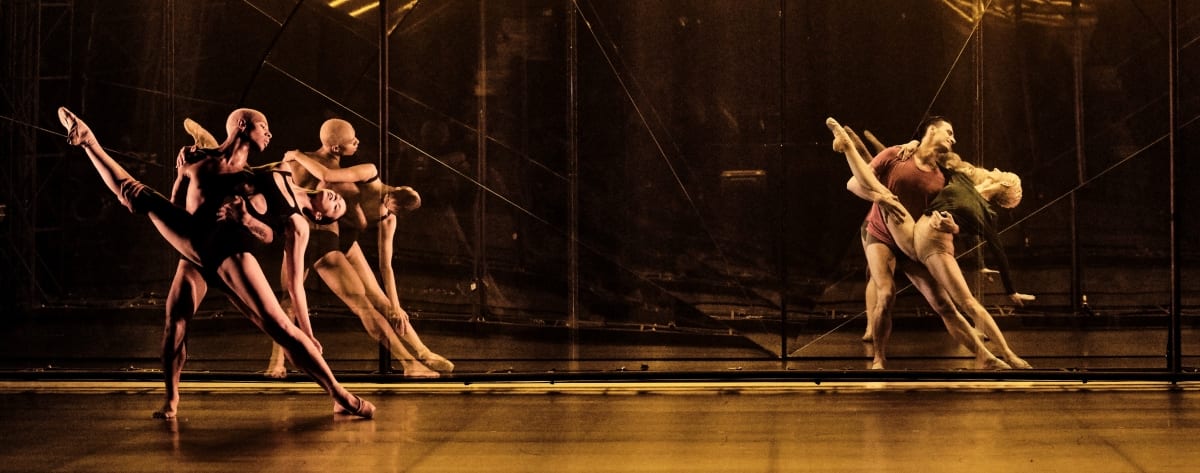The show begins when the ushers were still giving out programmes to the audience: the music composed by Jamie XX begins with a noise that could be mistaken with distant clapping. The public’s chatter fades down, and its thousand faces are gently blinded by a strange orange light coming from the stage. It suddenly feels like we are acting in Close Encounters of the Third Kind, and that we are about to meet aliens.
The ballet begins with a pair of surprising encounters indeed: before seeing the dancers properly, we get familiar with them through the sight of pure movement. The whole stage is dark, except for little dots of light on the dancers’ costumes. During the first minutes of the ballet, all the spectators can see is dancing constellations, forming shapes that do not look like human bodies and might as well be extra-terrestrial creatures. The second tableau also plays with the spectator’s perception of the dancers’ bodies, introducing an element that is central in Oliafur Eliasson’s scenography: mirrors. The dancers, still hiding in the dark, put their hands in what looks like flowers made of mirrors, in which the hands’ reflections are multiplied. The bodies become kaleidoscopic even before we see them completely, and those two first visual experiments shows the importance given to pure movement by choreographer Wayne McGregor.
The mirrors reflect the dancers’ bodies but also allows the audience to look at itself, sitting still. Some of the mirrors are semi-transparent and create dashing optical illusions, making the dancers’ reflections spin with the other real ones. If the first minutes of the ballet seem to lack a bit of colour because the dancers are all dressed in nude, dull colours, the clothes, geometrical settings, and lighting become progressively more colourful throughout.
The music, composed by Jamie XX, is wonderful. Aerial and joyful synths flirt with deeper, visceral bass lines that make the whole room tremble. This contrast is translated into movement by the dancers’ bodies that are also tense between these two things. They either do very contemporary, expressive and almost violent dancing but also do more classical movements that make them float and twirl like birds.
The ballet, adapted from a book of cut-up writing by Jonathan Safran Foer, does not need to be perfectly understood as there is no linear narrative to it, but it really needs to be felt and to be experienced – and it greatly achieves this goal. It softly ends with the same sounds of clapping as the beginning, forestalling the audience’s cheerful applause.

